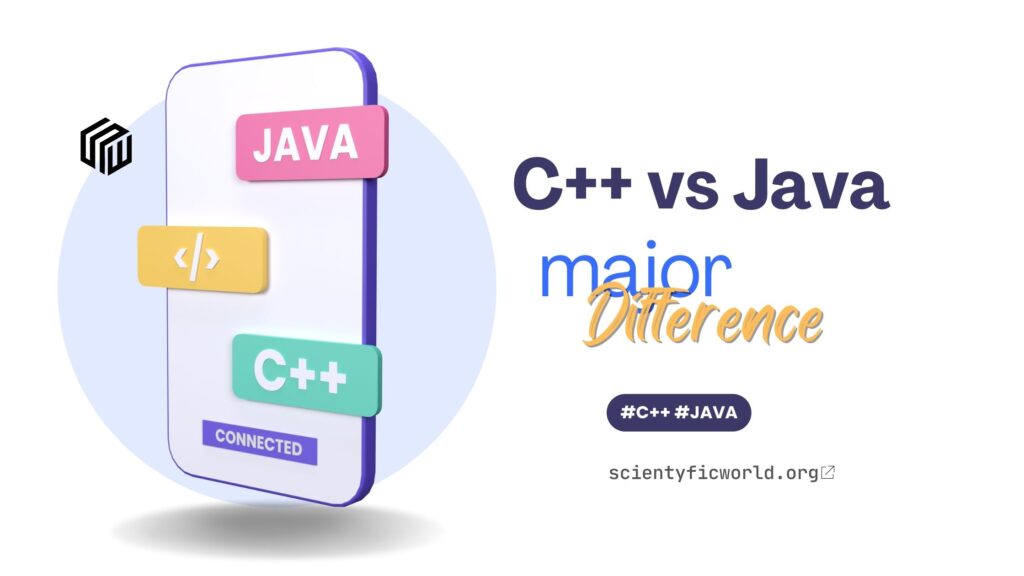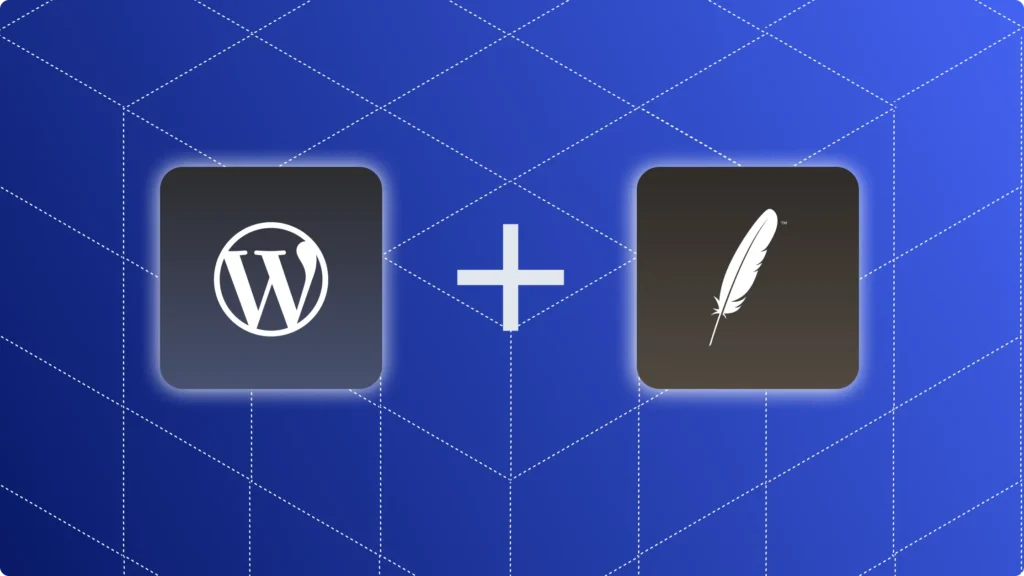C++ and Java are two of the most widely-used programming languages in the world. Both have their own strengths and weaknesses, and they are often used for different purposes. In this article, we will compare C++ and Java in terms of their paradigms, typing, memory management, implementation, inheritance, and other features. By the end of this article, you will have a better understanding of the differences between these two languages, and you will be able to choose the right one for your project.
But before going to differentiate, we should know the basics of both languages.
C++:
C++ is a general-purpose programming language that was developed by Bjarne Stroustrup in 1979. It is an extension of the C programming language, and it was designed to be an efficient, high-level language that can be used for low-level tasks such as system programming.
Cpp is a compiled language, which means that it is converted into machine code that can be executed directly by the computer’s processor. This makes Cpp programs fast and efficient, but it also means that they must be compiled before they can be run.
This is a statically-typed language, which means that the type of each variable must be specified when it is declared. This allows the compiler to catch many errors at compile time, but it can also make Cpp programs more verbose and difficult to write.
It supports manual memory management, which means that the programmer is responsible for allocating and freeing memory for their variables and data structures. This allows for fine-grained control over memory usage, but it also requires the programmer to be careful and avoid common pitfalls such as memory leaks and buffer overflows.
Cpp supports multiple paradigms, including object-oriented programming, imperative programming, and generic programming. This makes Cpp a versatile language that can be used for a wide range of applications, from web development to scientific computing.
Some of the main advantages of Cpp include its performance, flexibility, and the fact that it is supported by a large and active community. Some of the main disadvantages of Cpp include its steep learning curve, its verbosity, and the fact that it is not as safe as other languages such as Java or Python.
Improvement from C:
Some of the main improvements that C++ offers over C are:
- Object-oriented features: Cpp introduces the concepts of classes, objects, and methods, which allow for more modular and reusable code.
- Type safety: Cpp has stronger type checking than C, which helps prevent certain types of errors and makes the code more robust.
- Improved support for function overloading: CPP allows functions to have multiple definitions with different signatures, which makes it easier to write code that can handle a variety of input types.
- Improved support for operator overloading: CPP allows operators to be redefined for user-defined types, which can make it easier to work with complex data structures.
- Improved support for exception handling: CPP provides a mechanism for handling runtime errors called “exceptions”, which can make it easier to write robust code that can gracefully handle unexpected events.
- Improved support for templates: CPP introduces the concept of templates, which allow functions and classes to be defined with placeholders for types. This makes it possible to write generic code that can work with a wide range of data types.
Overall, Cpp is a powerful and versatile programming language that is well-suited for low-level tasks and systems programming. However, it may not be the best choice for beginners or for projects that require rapid development or safety.
Java:
Java is a general-purpose programming language that was developed by James Gosling in 1995. It is designed to be simple, object-oriented, and platform-independent, which makes it a popular choice for developing web applications and Android apps.
It is a compiled and interpreted language. This means that the source code is first compiled into Java bytecode, which is then executed by the Java Virtual Machine (JVM). This allows Java programs to be run on any platform that has a JVM, which makes Java a “write once, run anywhere” language.
It is a statically-typed language, which means that the type of each variable must be specified when it is declared. This allows the compiler to catch many errors at compile time, and it also enables Java to provide strong type safety.
Java uses automatic memory management, which means that the JVM is responsible for allocating and freeing memory for objects. This eliminates the need for the programmer to worry about memory management, but it can also make Java programs slower and less efficient than Cpp programs.
It is a class-based, object-oriented language that supports single inheritance. This means that classes can inherit methods and fields from other classes, but a class can only have one direct superclass. Java also supports interfaces, which allow for multiple inheritances of type.
Some of the main advantages of Java include its simplicity, portability, and safety. Java programs are easy to write and understand, and they can run on any platform with a JVM. Java is also a type-safe language, which makes it less prone to common programming errors such as null pointer exceptions.
Some of the main disadvantages of Java include its performance, verbosity, and the fact that it does not support some features that are present in other languages, such as operator overloading and templates.
Overall, it is a popular and widely-used programming language that is well-suited for developing web applications and Android apps. It is a good choice for beginners and for projects that require portability and safety. However, it may not be the best choice for projects that require the highest performance or that require advanced language features.
Difference between C++ and Java:
Here is a table that compares Cpp and Java:
| Feature | C++ | Java |
|---|---|---|
| Paradigm | Multi-paradigm (object-oriented, imperative, generic, functional, reflective) | Multi-paradigm (object-oriented, concurrent, class-based) |
| Typing | Static, strong, and manual | Static, strong, and automatic |
| Memory management | Manual | Automatic (garbage collected) |
| Implementation | Compiled | Compiled or interpreted |
| Inheritance | Multiple (single inheritance) | Multiple (multiple inheritances through interfaces) |
| Pointers | Yes | No |
| Operator overloading | Yes | No |
| Templates | Yes | No |
| Function overloading | Yes | No |
Difference by code example:
Here is an example of a simple class in Java that represents a point in two-dimensional space:
Java:
public class Point {
// instance variables (data)
private int x;
private int y;
// constructor (behavior)
public Point(int x, int y) {
this.x = x;
this.y = y;
}
// methods (behavior)
public int getX() {
return x;
}
public int getY() {
return y;
}
public void setX(int x) {
this.x = x;
}
public void setY(int y) {
this.y = y;
}
}This class defines a Point object that has two instance variables (x and y), which represent the coordinates of the point in two-dimensional space. The class also has a constructor, which is a special method that is called when a new Point object is created, and four methods (getX(), getY(), setX(), and setY()), which provides a way to access and modify the x and y coordinates of a Point object.
Here is an example of how you might use this Point class in a Java program:
public class Main {
public static void main(String[] args) {
// create a new Point object
Point p = new Point(1, 2);
// print the x and y coordinates of the point
System.out.println("x: " + p.getX());
System.out.println("y: " + p.getY());
// modify the x and y coordinates of the point
p.setX(3);
p.setY(4);
// print the x and y coordinates of the point again
System.out.println("x: " + p.getX());
System.out.println("y: " + p.getY());
}
}In this example, a new Point object is created with the coordinates (1, 2), and the x and y coordinates of the point are printed and then modified.
C++:
Here is the same Point class implemented in C++:
class Point {
// instance variables (data)
int x;
int y;
public:
// constructor (behavior)
Point(int x, int y) {
this->x = x;
this->y = y;
}
// methods (behavior)
int getX() {
return x;
}
int getY() {
return y;
}
void setX(int x) {
this->x = x;
}
void setY(int y) {
this->y = y;
}
};And here is an example of how to use the Point class in a C++ program:
#include <iostream>
using namespace std;
int main() {
// create a new Point object
Point p(1, 2);
// print the x and y coordinates of the point
cout << "x: " << p.getX() << endl;
cout << "y: " << p.getY() << endl;
// modify the x and y coordinates of the point
p.setX(3);
p.setY(4);
// print the x and y coordinates of the point again
cout << "x: " << p.getX() << endl;
cout << "y: " << p.getY() << endl;
return 0;
}As you can see, the Point class in Cpp is very similar to the Point class in Java, but there are a few differences in the syntax and structure of the code. For example, in Cpp, the methods and variables of the class are marked with the public: keyword, whereas in Java, they are marked with the public keyword. Additionally, the this keyword is used in Cpp to refer to the current object, whereas in Java, it is implicit.
Conclusion:
In conclusion, both C++ and Java are popular programming languages that have their own strengths and weaknesses. C++ is a powerful, high-performance language that is commonly used in the development of system and application software, drivers, client-server applications, and video games. On the other hand, Java is a versatile, high-level language that is widely used in web and mobile development, as well as in the development of enterprise-level applications.







